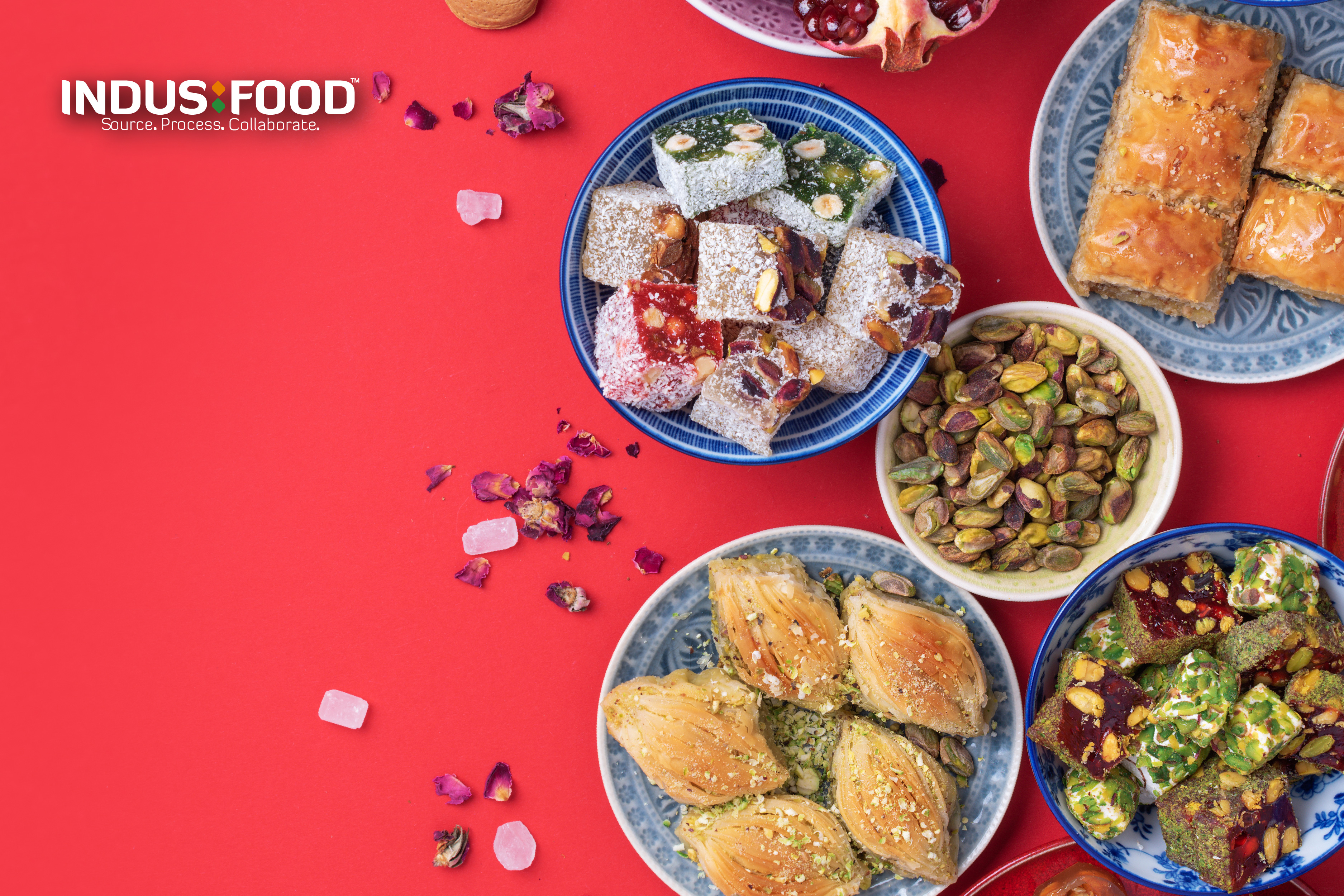
India’s vibrant traditions and cultural richness are on full display during Diwali, known as the Festival of Lights, where the celebration is anchored by the cherished practice of sharing sweets, or mithai. As families prepare to create gifts, the sweets market experiences significant growth, with demand surging to four times that of non-festive periods. This year the Indian sweets market is driven not only by festive celebrations but also by corporate gifting and evolving consumer preferences towards health-conscious options.
Looking ahead, the Indian sweets market is poised for further expansion, fuelled by trends that blend traditional flavours with contemporary influences. Innovative offerings such as sugar-free mithai and bite-sized snacks cater to the health-conscious and busy lifestyles of today’s consumers.
As brands continue to explore new flavours and sustainable practices, the sweet market becomes a symbol of joy, love, and connection during Diwali. Ultimately, the tradition of gifting sweets not only enhances familial and communal bonds but also reflects a broader narrative of innovation within the confectionery industry, promising a bright future filled with indulgence and togetherness.
India, a land of vibrant traditions and cultural richness, shines even brighter during the Festival of Lights—Diwali. This grand celebration, where homes glow with diyas, the air buzzes with laughter, and sweet aromas waft through every neighbourhood, beautifully encapsulates the deep-rooted connection between food and festivities. While the sound of fireworks may illuminate the night sky, it is the sweet symphony of mithai that truly elevates the Diwali spirit, symbolising happiness and unity.
As the festive season approaches, preparations start weeks in advance. Families gather to create delectable sweets that will not only tantalize the taste buds but also convey love and well wishes to their friends and relatives. The tradition of gifting sweets during Diwali has become a cherished practice, representing an unbreakable bond between families and friends.
As Diwali approaches, the excitement in the air is undeniable. It is a time when families and friends come together to celebrate love, kindness, and shared joy through sweets. The essence of Diwali is reflected in the vibrant colours of rangoli, the illuminating diyas, and the laughter that fills homes. Yet, undeniably, it is when sweet boxes are opened, revealing an assortment of colourful mithai, that faces light up with joy.
For many, sweets are an invitation to enjoy life’s pleasures and share memorable experiences. The timeless tradition of gifting mithai, enhancing the bonds of love and kinship, echoes the emotion behind every sweet preparation. As Pardip Kumar Jaga, owner of Bansi Morenawala, aptly summarises, “Diwali is not just a festival; it’s an occasion to spread happiness. Our mission is to bring real Indian flavours to the market, ensuring we stay true to the authenticity and goodness of traditional mithai.” From his estimation, Indian spending on sweets quadruples during festivals like Diwali. Bhikharam Chandmal estimates that around 30-35% of total sales are accounted for by 30-45 days of the festival.
The rise of the sweets market is a noteworthy phenomenon. Additionally, the festive season, particularly Diwali, acts as a catalyst for this market, with demand for sweets expected to quadruple compared to non-festive periods.
This year, the Indian sweets market is poised for remarkable growth, with the industry’s packaged segment alone valued at US$ 751 million (₹ 6,229.7 crore) in 2023, projected to reach US$ 3.12 billion (₹ 25970.8 crore) by 2032, reflecting a CAGR of 16.67% from 2024-32, according to IMARC.
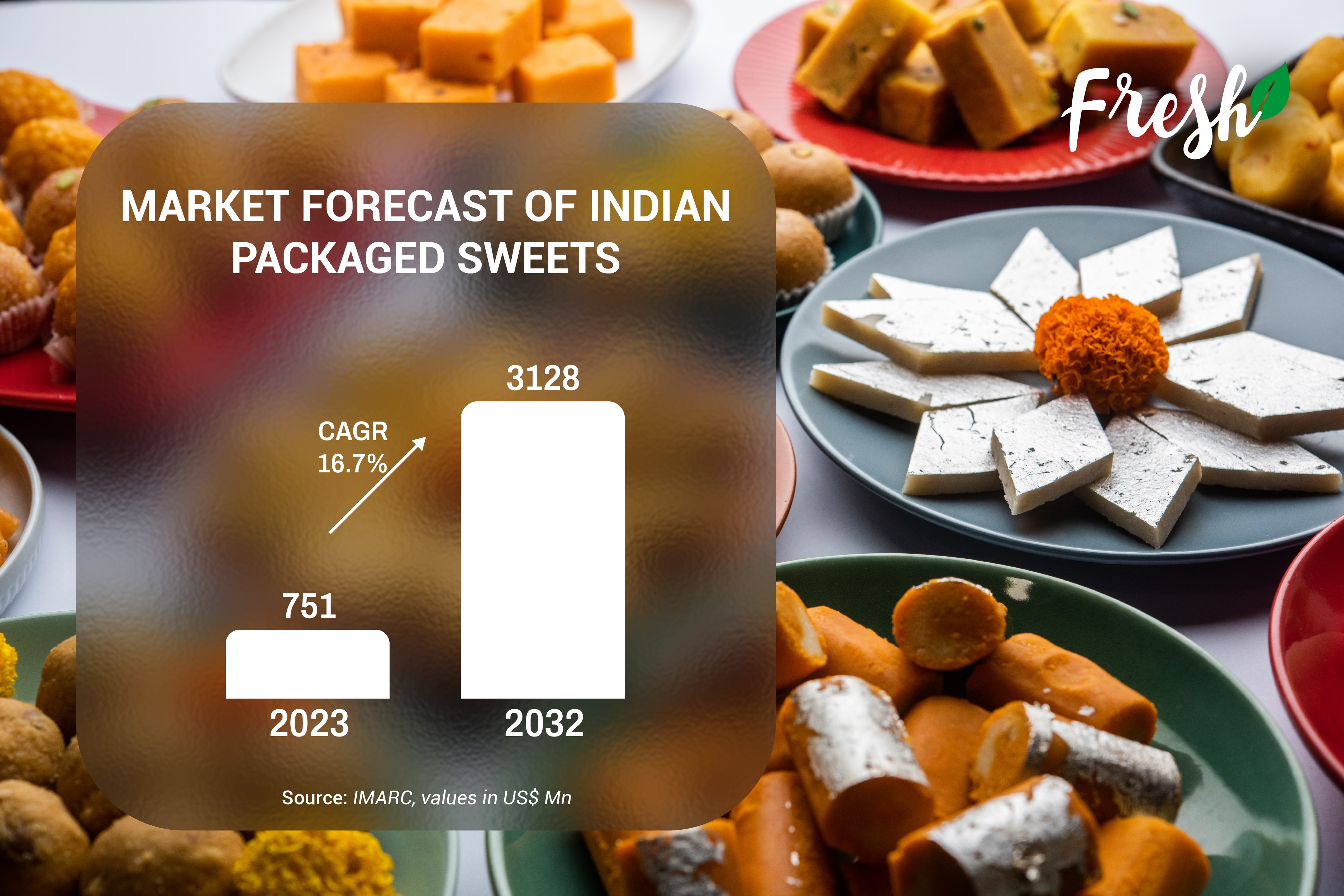
“The impact of Diwali goes beyond family gatherings. Corporate gifting also flourishes during this time, as businesses express gratitude towards clients and employees through sweet tokens of appreciation,” shares Gopal Punjabi, Head of Sales and Marketing at Karachi Bakery. Fruit biscuits remain their most popular product, while traditional mithai still attracts middle-class families, he adds.
The corporate gifting industry surged to a market value of ₹ 12,000 crores (US$ 1.45 billion) in 2022, with sweets playing a significant role. This growth offers lucrative opportunities for sweet makers, particularly during the Diwali season when gifts are exchanged in abundance.
Sumeet Harsh, Head – International Marketing, Sunshine Food Products Pvt Ltd (Bhikharam Chandmal), comments, “Usually consumers prefer Soan Papdi and canned sweets. They have good shelf life, are better in taste and fit in their budget too. Since long we are exploring new fusions with tradition sweets, just to keep our tradition safe while giving them a twist of chocolates and various flavours. Moreover, we have worked a lot on giving better shelf life to traditional sweets like kaju katli, kaju rolls and boondi laddu so our consumers can enjoy these delicacies for a bit longer.”
The evolving consumer preferences toward healthier options, alongside the enduring popularity of traditional mithai, shapes the landscape of the sweets industry. Brands are now fostering this growth by integrating innovation with tradition.
Companies are exploring contemporary variants such as sugar-free mithai, sweets made from natural ingredients like jaggery, and offerings infused with nutritious elements such as nuts and seeds. As packaging innovation improves hygiene and convenience, consumers find joy in selecting sweets that reflect both their heritage and their modern preferences.
Kunal Bajaj, Director, Punjabi Ghasitaram Halwai, agrees, “Kaju Katli, Laddu, Dhodha, Besan Laddu, Bundi Laddu, and Peda are all-time favorites that consistently perform well. This year, we’ve also introduced a new range of dry fruit sweets and a sugar-free range to cater to evolving customer preferences.”
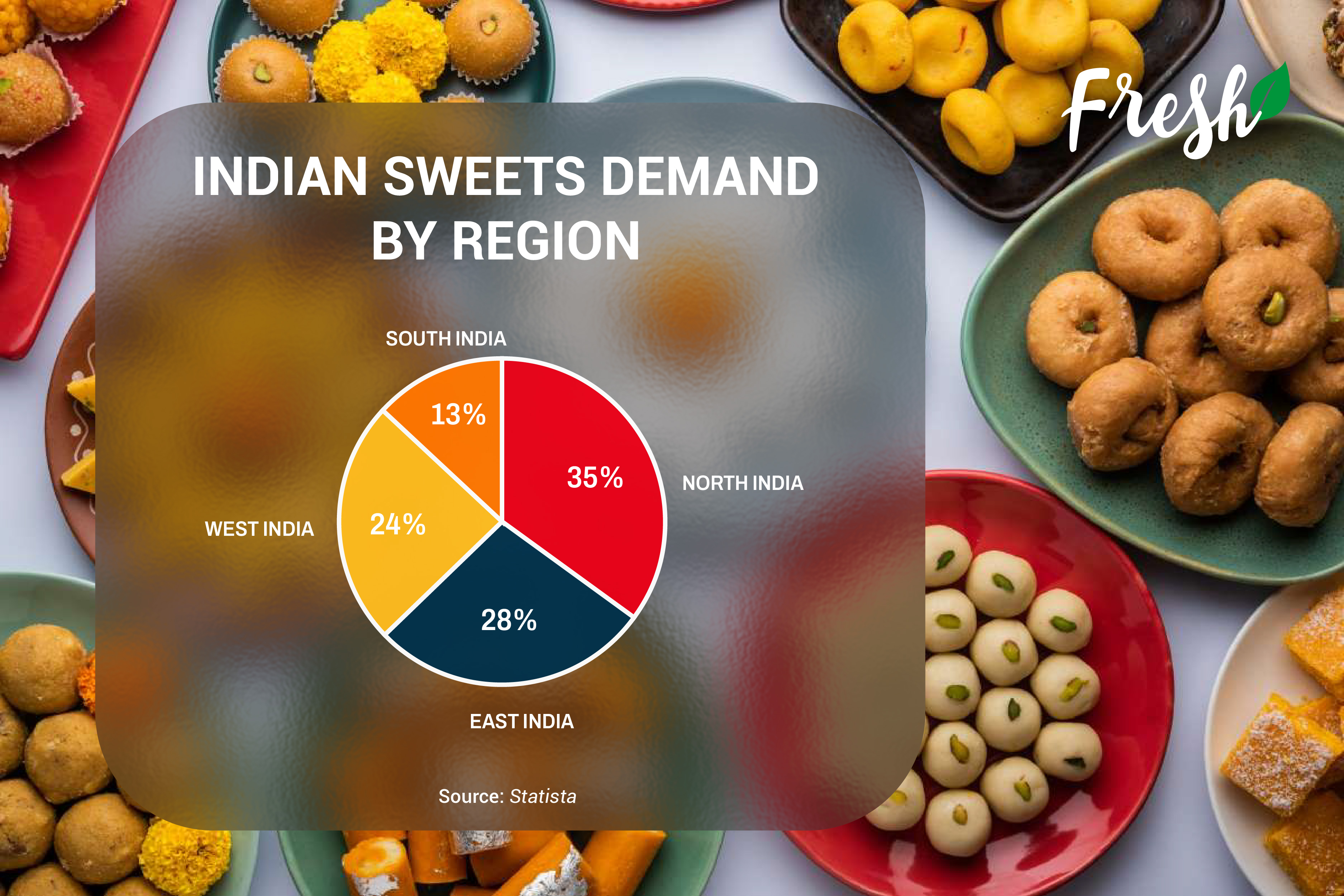
Tanushree Gupta, Founder & MD, Mr. Brown (Danbro), mentions, “We introduced baked gujia as a healthier alternative during Holi, but it has now become a fan favourite year-round.” This keen focus on health aligns with growing consumer awareness towards nutrition, setting the stage for unique offerings that retain authentic flavours while catering to modern health-conscious consumers. One of their popular offerings is fusion baklava, which uses fusion honey instead of sugar. This shows an evolving palette that prefers traditional flavors with a healthier, more natural touch.
Growth Drivers of the Sweet Market
Prateek Athwani, Founder, Lal Sweets, pitches in, “Soan Papdi continues to be our top seller, trending number one in sales as usual. However, we’ve also seen growing traction for other fresh sweets, like Mathura Peda and Baklava, which have gained popularity in recent times.”
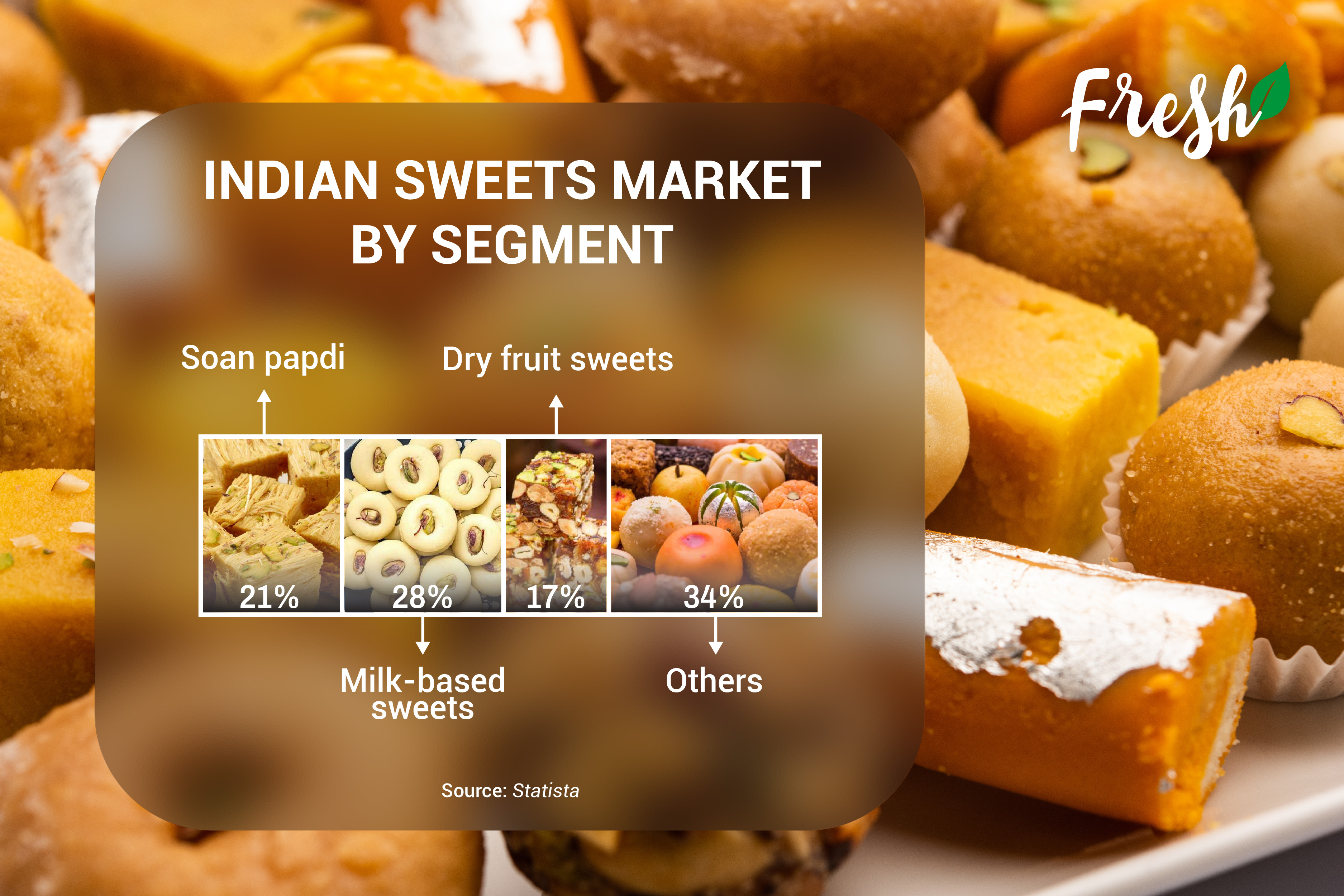
For Chandigarh Sweets, laddoos and dhodha barfis do very well during the festive season, while Pan Petha is gaining a lot of traction in recent years. Pan Petha is a delightful Indian sweets that combines the refreshing flavour of paan (betel leaf) with the traditional charm of petha, a translucent, soft candy made from ash gourd (winter melon). He adds that it hails from the historic city of Agra, home to the iconic Taj Maha.
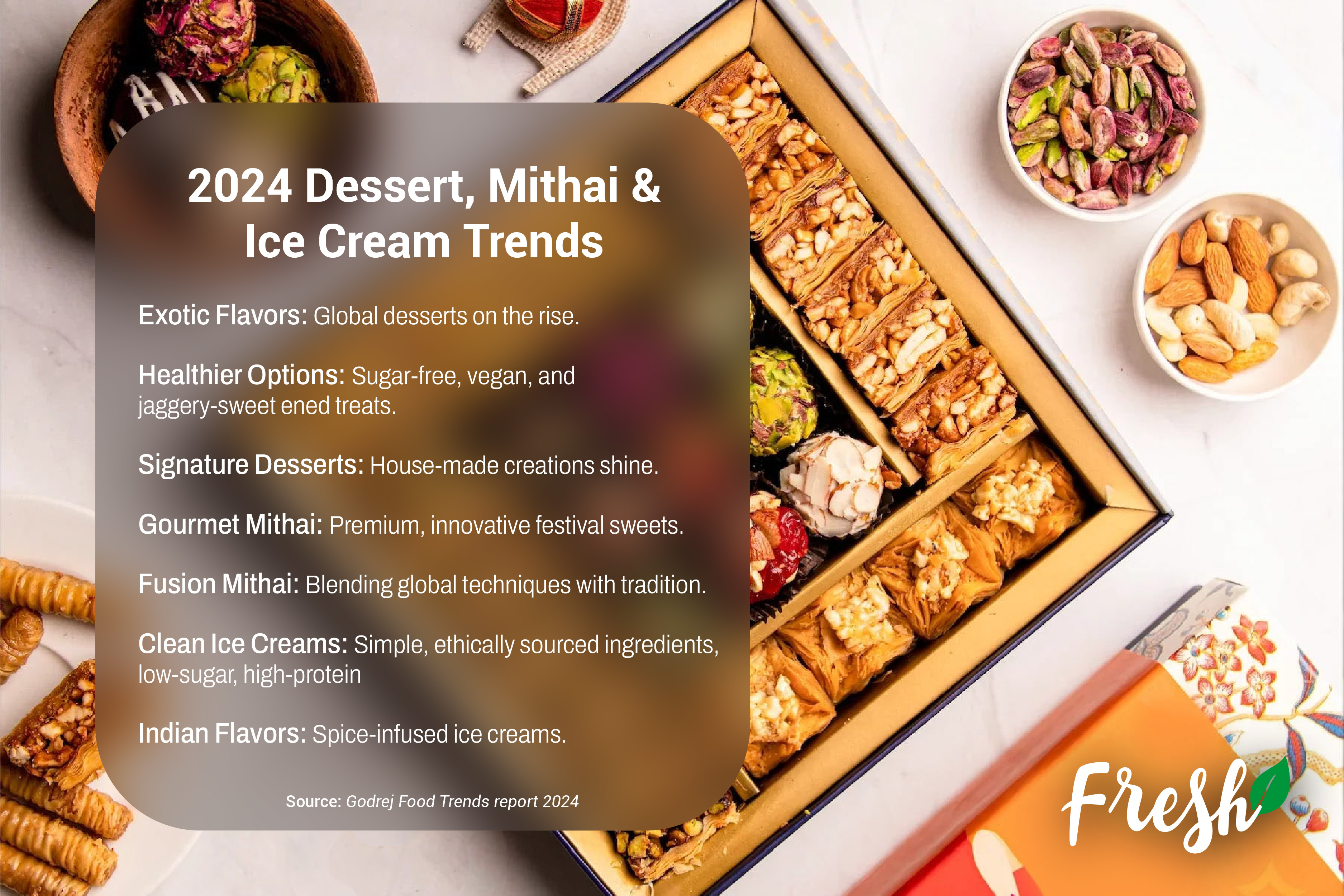
Looking forward, the sweet market is brimming with promise and potential. The burgeoning focus on health will continue to drive demands for nutritious yet indulgent sweets. Companies are capitalising on trends, introducing vibrant flavours that blend traditional and modern influences. Exciting products like Rasgulla cake and Gulkand truffles are appealing to adventurous young consumers seeking unique taste experiences, exemplifying the fusion of regional specialities with global trends.
In addition to creativity in flavour, there’s a growing trend in bite-sized snacking, reflecting the fast-paced lifestyles of modern consumers. Miniature sweets like kulfi pops and petite chocolate boxes are gaining popularity, making them perfect for gifting while offering convenience.
As Mr. Kunal Bajaj from Punjabi Ghasitaram Halwai notes, “The excitement for celebrating Diwali creates an atmosphere where innovative offerings thrive, meeting the evolving tastes of today’s consumers.”
Ultimately, the Indian sweets market’s growth is representative of an industry that cherishes tradition while embracing innovation, adapting to consumer preferences, and evolving landscapes. It blends flavours old and new, and each bite encapsulates a story that transcends time and geography. With the promise of a bright future, the sweets market will continue to blossom even further, allowing every sugar-coated joy to deepen ties and bring everyone together in harmony this festival season.
Read More:
© Trade Promotion Council of India. All Rights Reserved.